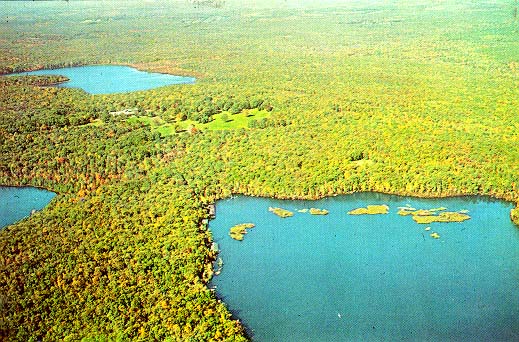Background and Introduction to Landscape Ecology Work
Being Done at the Forest Lake Club

The aim of our research is to provide an understanding of the three-dimensional units of landscape of the Forest Lake Club (FLC) that we call landscape ecosystem types, or simply ecosystems. Specifically we have focused on the kinds, spatial locations and patterns, and composition (physiography, soil, vegetation) of the local landscape ecosystem types of FLC. Future research on the functioning of these ecosystems together with inventories of their plant and animal life will add significantly to the landscape ecology research that we have initiated.
One major reason for this research is to provide the conceptual basis and baseline data for understanding ecosystem change. Although it is popular to speak of climate change, entire ecosystems change; some components changing faster than others. Sooner or later, ecosystem change manifests itself in functional and compositional changes in real landscapes. Therefore, a major objective of our research is to provide baseline maps, data, and permanent sample plots to monitor these perceived changes in site-specific ecosystems of FLC. Monitoring of these landscape ecosystems over the next 20-200 years will confirm or reject predictions now being made and reveal the sequence of changes in each site-specific ecosystem type or group of ecosystem types.
A second major reason for this research is to develop a land management plan for Club property. The baseline data gathered is the foundation for the development of this land management plan, which would have its roots in the landscape ecosystems of FLC. Any property as large as FLC (4,500 acres) is in need of a concise and orderly plan in order to maintain the integrity and beauty of its natural landscape. This plan would direct the building and maintenance of the trail system, the protection of the water quality of the lakes, hunting and fishing practices, road and cottage construction, timber harvesting, golf course management, etc.--all of which are directly linked to landscape ecosystems.
Our research has produced (or is in the process of producing) several maps to provide an ecological framework for both of these objectives: